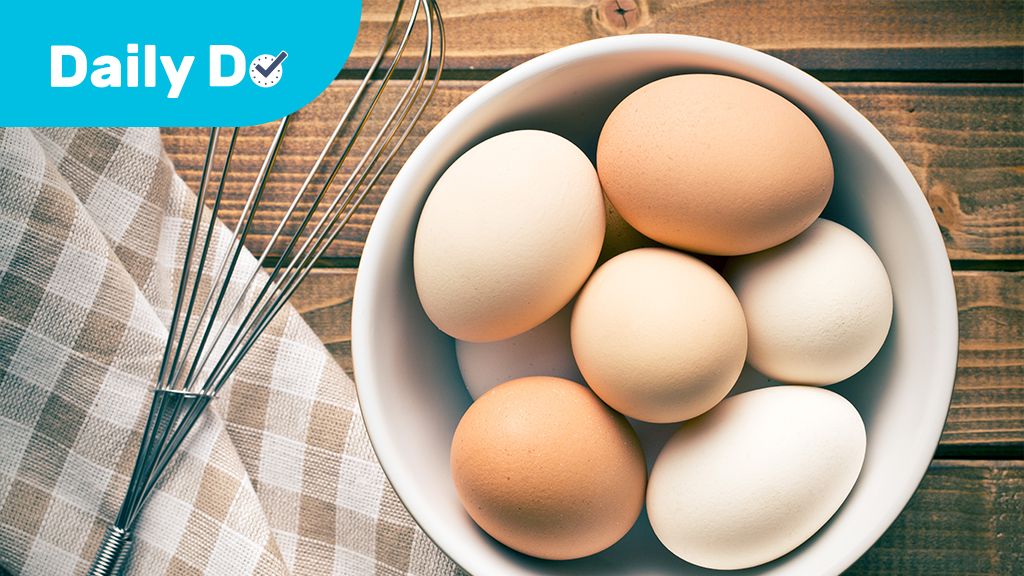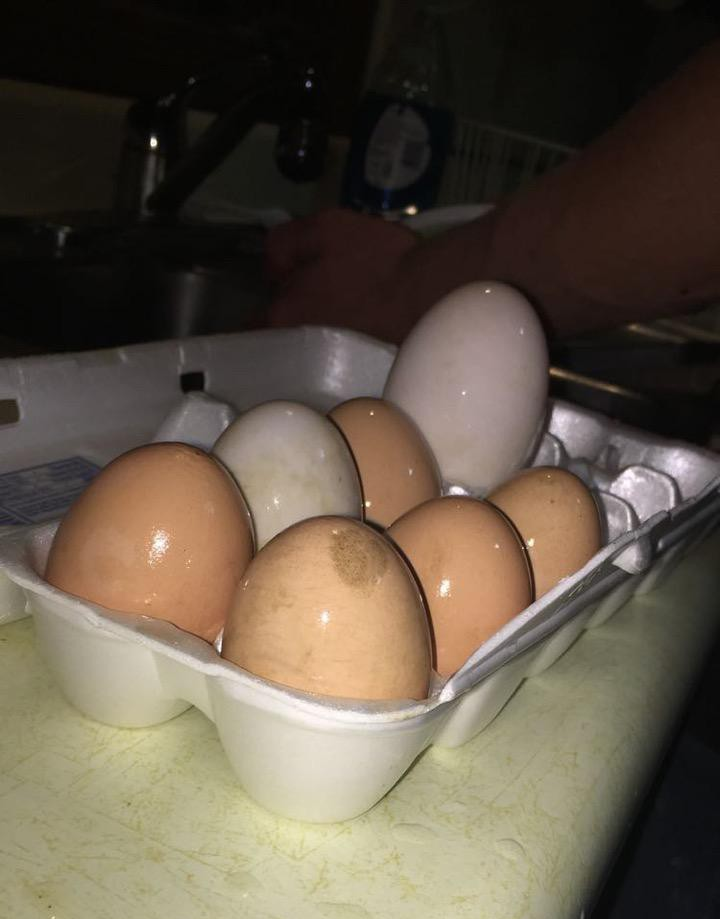Middle School | Daily Do
What's In an Egg?

Biology Crosscutting Concepts Disciplinary Core Ideas Is Lesson Plan Lesson Plans Life Science NGSS Performance Expectations Phenomena Science and Engineering Practices Three-Dimensional Learning Middle School Grades 6-8
Welcome to NSTA's Daily Do!
Teachers and families across the country are facing a new reality of providing opportunities for students to do science through distance and home learning. The Daily Do is one of the ways NSTA is supporting teachers and families with this endeavor. Each weekday, NSTA will share a sensemaking task teachers and families can use to engage their students in authentic, relevant science learning. We encourage families to make time for family science learning (science is a social process!) and are dedicated to helping students and their families find balance between learning science and the day-to-day responsibilities they have to stay healthy and safe.
Interested in learning about other ways NSTA is supporting teachers and families? Visit the NSTA homepage.
What Is Sensemaking?
Sensemaking is actively trying to figure out how the world works (science) or how to design solutions to problems (engineering). Students do science and engineering through the science and engineering practices. Engaging in these practices necessitates that students be part of a learning community to be able to share ideas, evaluate competing ideas, give and receive critique, and reach consensus. Whether this community of learners is made up of classmates or family members, students and adults build and refine science and engineering knowledge together.
Introduction
Today's task explores something many students and families are familiar with: eggs! This task, What's in an Egg?, engages students in science and engineering practices to figure out why some eggs produce chickens (or other living things) and some do not. This task has been modified from its original design to be used by students, parents, and teachers in distance and home learning. While students could complete this task independently, we encourage students to work virtually with peers or in the home with family members.
Before you begin the task, you may want to access the accompanying What's in an Egg Google slide presentation.

Presentation of Phenomena (What Am I Exploring Today?)
Guidance. Students will be introduced to the phenomenon—some eggs produce chickens and some do not—through the video. The goal is to get students thinking about eggs and wondering what makes one egg different from another. Presenting a phenomenon and asking students to generate questions about it creates a need to figure out the answer to those questions. This is authentic engagement and a powerful learning process (unlike "learning about" the difference between fertilized and unfertilized eggs and being asked to recall the information later).
Presenting the Phenomenon
Have students watch the video clip (slide 3). Ask them to think about the idea introduced in the video clip: What is the difference between the egg we might eat and one that produces a chicken? Have them write their questions on a sheet of paper. All student questions are okay at this point. Our goal is to motivate curiosity, not to distinguish between "good questions" and "bad questions" or "right questions" and "wrong questions." Common questions will arise for most students, which is what this task builds upon.
Although some students may know that fertilized eggs can grow into chickens and unfertilized eggs are used as food, prompt them to think about other questions they might have about eggs.
Suggested Prompts
- What questions do you have about how that happens?
- What questions do you have about the different parts of the egg?
- What questions do you have about other kinds of animal eggs?
Investigative Questions (What Questions Do I Have About What I Just Saw?)
Investigative questions are common questions kids may ask after they are introduced to the phenomena. Although questions may vary, many students are curious about why some produce chicks (or some other animal) and others do not.
Guidance. It is important to allow time for thinking. Many students have ideas and questions, but need time to formulate their idea or question into words. Some students may also benefit from writing things first before they share. As adults, we may be tempted to give them questions we feel might be important to explore; however, we need to refrain from this and allow our students to practice asking their own questions.
Common Questions (Slide 4)
- Can we eat all types of eggs?
- Do some chickens make eggs for the store that we eat and different chickens lay eggs that make chicks?
- What is the difference between an egg that makes a chicken and one that we eat?
- How do we tell the difference?
After all the questions have been asked, we want to prompt our students to express their own ideas of how to figure out the answers to their questions. Ask them, "What could we do to figure out some things about eggs?"
Common Responses
- Break open some eggs to see what is inside.
- Google some of our questions.
- Get some eggs and see if they will hatch.
Let's start by seeing if there is a way to figure out what is inside the egg without breaking it open. Ask, "Do you think there is a way to see inside an egg without breaking the shell?"
Allow your students to express their ideas. Many students will say to x-ray them, so that is what we will do, kind of...
My Observations (What Observations Did I Make That Help Me Answer My Questions?)
(Slide 5) If we were able to look inside an egg, what would you look for? What would you expect to see? Do you think we would see different things depending on the egg?
Have students document what they will look for inside an egg and/or make predictions of what they might see. (Slide 6)
Watch Are Miss Pauletta’s Eggs Fertile? (below) about the purpose of candling eggs. (Slide 7)

Investigation (Based on My Observations, This Is My Plan for Investigating My Question[s]….)
Before allowing students to crack open an egg to make observations, have them write about or draw a picture of what they think they might see inside the egg.
Many students will know that the egg consists of the shell, yolk, and the "clear part" or whites, and some may also talk about the "white stringy thing." Although many students can identify the major parts of the egg, they do not know the other part or the function of the different structures.
Have students investigate an egg, inside and out (Slide 8). Remember to follow safety procedures, as you will be handling food items. This Egg Dissection YouTube video provides a tutorial. The procedure sheet may be printed, or the students can read a digital copy.
Guidance. Have students explore in depth the different parts of both the shell and the inside of the egg. As students identify and document the different parts, it is not necessary that they know the names of all of the various structures. Have students use their own words to describe the structures they observe. The goal is to get kids to notice that the egg has many different structures. As students add structures to their chart, have them make predictions about what those do (function) and add their reasoning (why they think those structures do the things they do).
When students have completed their egg investigation, they can use the following website to get more information on the structures of the egg and their functions.
Research The Anatomy of an Egg. Students will probably not have observed each of the structures shown, and there is no need to document all of them. However, students may want to revise their charts to represent the names of the structures they did identify and their function.
Building Consensus
Let's return to the questions we had at the beginning of this task. For example,
- Can we eat all types of eggs?
- Do some chickens make eggs for the store that we buy and eat and different chickens lay eggs that make chicks?
- What is the difference between an egg that makes a chicken and one that we eat?
- How do we tell the difference?
Through our observations and investigations, were we able to answer most or maybe all of the questions? Think about all of things you just figured out about eggs and document them on your paper.
Guidance. It is important that you allow students to document what they have figured out in their own words. Allow them time to write about all their new understandings, then have a short discussion about what they have figured out through participating in this task. During this discussion, the students should be doing most of the talking; the adult is there to listen and prompt the student.
We have figured out that
- Fertilized eggs could hatch into chickens (or other animals).
- Unfertilized eggs do not hatch into chickens, and these are the ones we buy in the store to eat.
- We can candle an egg to see if it is fertilized or not.
- If an egg is fertilized, we can see a dark spot and blood vessels starting to form.
- If an egg is not fertilized, the light glows through the egg and sometimes we can see the air sac.
- An egg has many different parts, more than what we thought.
- The different parts of the egg all do different things.
- The shell of the egg has pores that let things in and out.
- The yolk of the egg is food for the baby chick while growing inside the shell.
- ...Other
Who knew there was so much to figure out about eggs! Are there more things we could find out about eggs? If you want to know more about the storyline, see the link in the Acknowledgement section.
Note: If you want to learn more about how to get students talking, visit STEM Teaching Tool 48, How can teachers guide classroom conversations to support students' learning?
Home Connections
Eggs are something many students are familiar with, but know little about. Parents/Guardians can expand on the learning in this task in many ways at home, including these:
- Cooking eggs
- Cooking with eggs—Why do we use eggs when we bake?
- Looking at the nutritional label—what structures make up the protein? Or the fat?
- Soaking an egg in vinegar to see what happens to the shell
Another resource you could explore is The Science of Cooking Eggs
NSTA has created a What's in an Egg? collection of resources to support teachers and families using this task. If you're an NSTA member, you can add this collection to your library by clicking Add to My Library, located near the top of the page (at right in the blue box).
Acknowledgement
This Daily Do is inspired by and uses materials from the How Do Eggs Become Chickens or Other Living Things? storyline created by Next Gen Storylines. Next Gen Storylines is an open-source resource that can be used by parents and teachers to implement student-driven learning.


